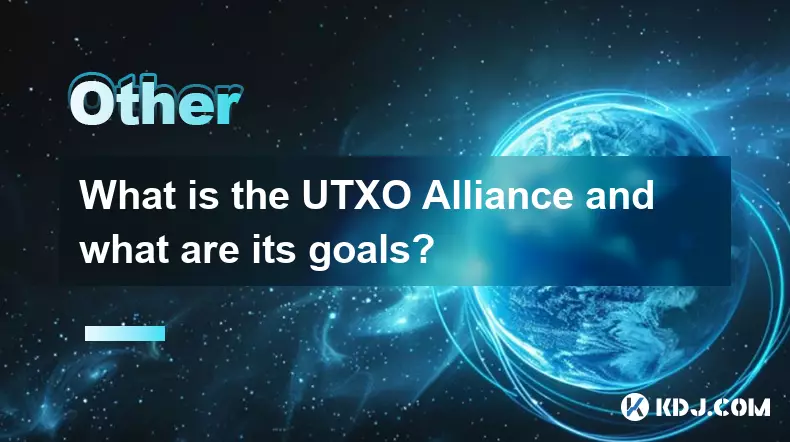-
 bitcoin
bitcoin $101752.865364 USD
-1.09% -
 ethereum
ethereum $3382.985899 USD
-1.38% -
 tether
tether $0.999658 USD
0.04% -
 xrp
xrp $2.272505 USD
-1.51% -
 bnb
bnb $989.089004 USD
0.14% -
 solana
solana $156.962612 USD
-3.08% -
 usd-coin
usd-coin $0.999776 USD
0.01% -
 tron
tron $0.290786 USD
-0.69% -
 dogecoin
dogecoin $0.174594 USD
-2.86% -
 cardano
cardano $0.560085 USD
-3.55% -
 hyperliquid
hyperliquid $40.023704 USD
-5.75% -
 chainlink
chainlink $15.324649 USD
-2.78% -
 bitcoin-cash
bitcoin-cash $493.576540 USD
-3.52% -
 zcash
zcash $571.320038 USD
-12.05% -
 stellar
stellar $0.280066 USD
-4.26%
What is the concept of "credible neutrality" for blockchain protocols?
Credible neutrality in blockchain ensures unbiased, transparent rules enforced by code and economics, fostering trust without centralized control.
Nov 09, 2025 at 12:40 pm

Understanding Credible Neutrality in Blockchain Protocols
1. Credible neutrality refers to the principle that blockchain protocols operate without bias, favoritism, or susceptibility to manipulation by any individual, group, or centralized authority. This concept ensures that all participants are treated equally under the rules encoded into the system, regardless of their identity or influence.
2. The credibility of this neutrality is derived from the protocol’s transparency, immutability, and decentralized governance. Because the rules are open-source and enforced algorithmically, users can verify for themselves that no special treatment is given to certain actors.
3. In practice, credible neutrality means that transaction validation, block creation, and network upgrades follow predefined mechanisms that cannot be altered retroactively or selectively. This predictability fosters trust among users who rely on the network to function consistently over time.
4. A key component of credible neutrality is resistance to political or corporate interference. When a blockchain is credibly neutral, even powerful stakeholders such as large miners, developers, or investors cannot unilaterally change the rules to serve their interests.
5. This principle differentiates public blockchains like Bitcoin and Ethereum from traditional financial systems, where central institutions often have discretionary power to freeze accounts, reverse transactions, or alter policies based on external pressures.
The Role of Code as Law
1. In credibly neutral blockchains, the code itself acts as the ultimate authority. Rules governing consensus, token distribution, and smart contract execution are embedded directly into the software, minimizing the need for human intervention.
2. Because the code is publicly auditable, anyone can inspect how decisions are made within the network. This transparency reduces information asymmetry and prevents backroom deals that could compromise fairness.
3. Upgrades and changes to the protocol typically require broad community consensus, often demonstrated through on-chain voting or miner signaling. This process reinforces neutrality by ensuring that modifications reflect collective agreement rather than top-down mandates.
4. When disputes arise—such as forks following contentious updates—the market ultimately decides which version aligns more closely with the principles of neutrality and decentralization. Networks perceived as less neutral may lose user trust and adoption.
5. The enforcement of 'code as law' strengthens the perception that outcomes are determined by objective mechanisms rather than subjective judgments.
Incentive Alignment and Trust Minimization
1. Credible neutrality is reinforced through carefully designed economic incentives. Miners, validators, and node operators are rewarded for adhering to protocol rules, making it costly to deviate or act maliciously.
2. These incentive structures reduce reliance on trusted third parties. Users do not need to believe in the goodwill of developers or administrators; they only need confidence that the underlying economics disincentivize harmful behavior.
3. For example, in proof-of-stake systems, validators must lock up significant amounts of cryptocurrency as collateral. If they attempt to manipulate the network, they risk losing their stake—a mechanism known as slashing.
4. By aligning individual self-interest with network integrity, credible neutrality becomes an emergent property of the system's design.
5. This trust-minimized environment allows global participants to interact securely without prior relationships or legal intermediaries, enabling new forms of permissionless innovation and cross-border coordination.
Challenges to Maintaining Credible Neutrality
1. Despite its ideals, achieving perfect credible neutrality is difficult in practice. Development teams often hold disproportionate influence over protocol direction, especially during critical upgrade discussions.
2. Concentrations of mining or staking power can create de facto control points, where a small number of entities wield outsized impact on network operations and decision-making.
3. Social layer dynamics also play a role. Public narratives, media influence, and community sentiment can sway governance outcomes in ways that may not strictly adhere to formal rules.
4. Additionally, regulatory pressure from nation-states may force exchanges or infrastructure providers to comply with censorship demands, indirectly undermining the neutrality of otherwise decentralized networks.
5. Maintaining credible neutrality requires constant vigilance, active participation, and a commitment to resisting centralization in all its forms.
Frequently Asked Questions
What makes a blockchain credibly neutral rather than just neutral?A blockchain is considered credibly neutral when its neutrality is verifiable and enforceable through cryptographic proofs, open governance processes, and economic incentives. It’s not enough for a network to claim impartiality; users must be able to independently confirm that no party can manipulate outcomes.
Can a blockchain with a foundation or core development team still be credibly neutral?Yes, but only if the team does not possess unilateral control over upgrades or policy decisions. Their role should be limited to proposal and maintenance, with final approval resting on decentralized consensus mechanisms involving the broader community.
How does credible neutrality affect DeFi applications?DeFi platforms built on credibly neutral blockchains inherit their trustless nature. Users can deploy capital knowing that lending, trading, and borrowing logic will execute exactly as coded, without interference from developers or regulators.
Is Bitcoin the most credibly neutral blockchain?Many in the crypto space regard Bitcoin as the gold standard for credible neutrality due to its minimal governance, strong adherence to protocol rules, and resistance to change without overwhelming consensus. Its predictable issuance schedule and capped supply further reinforce this perception.
Disclaimer:info@kdj.com
The information provided is not trading advice. kdj.com does not assume any responsibility for any investments made based on the information provided in this article. Cryptocurrencies are highly volatile and it is highly recommended that you invest with caution after thorough research!
If you believe that the content used on this website infringes your copyright, please contact us immediately (info@kdj.com) and we will delete it promptly.
- Ripple (XRP) in 2026: Hold or Fold? A Look at XRP's Future and Emerging DeFi Alternatives
- 2025-11-08 18:35:01
- Zcash ZEC Coin Price Explosion: From Privacy Niche to Center Stage
- 2025-11-08 18:55:01
- Berachain Price Prediction: Navigating the Honeycomb Hype in Crypto
- 2025-11-08 18:55:01
- Arthur Hayes, Gold, and Bitcoin: A Modern Monetary Trinity?
- 2025-11-08 19:15:01
- Shiba Inu's Next Move: Navigating a Shifting Market
- 2025-11-08 19:20:01
- Pakistan's Crypto Crossroads: Balancing Opportunity with Asset-Backed Realities
- 2025-11-08 19:20:01
Related knowledge

What are intents in crypto and how do they change user interaction?
Nov 09,2025 at 09:00am
Understanding the Role of Decentralized Exchanges in Modern Crypto Trading1. Decentralized exchanges, commonly known as DEXs, have reshaped how trader...

What is restaking and how does it enhance economic security?
Nov 09,2025 at 11:40pm
Understanding Restaking in the Blockchain Ecosystem1. Restaking refers to the process where users who have already staked their tokens in a proof-of-s...

What is a cryptographic nonce and how is it used to prevent replay attacks?
Nov 08,2025 at 05:00pm
Understanding Cryptographic Nonces in Blockchain Systems1. A cryptographic nonce is a number used only once within a specific cryptographic communicat...

What are the trade-offs between liveness and safety in a consensus protocol?
Nov 09,2025 at 12:20pm
Understanding the Role of Liquidity Pools in Decentralized Finance1. Liquidity pools are foundational components within decentralized exchanges (DEXs)...

What is a call data in an Ethereum transaction and how is it used?
Nov 09,2025 at 01:59am
Understanding Call Data in Ethereum Transactions1. Call data refers to the information sent along with a transaction on the Ethereum network that spec...

What is the UTXO Alliance and what are its goals?
Nov 09,2025 at 01:39pm
Understanding the UTXO Alliance1. The UTXO Alliance is a collaborative initiative formed by prominent blockchain projects and developers who support t...

What are intents in crypto and how do they change user interaction?
Nov 09,2025 at 09:00am
Understanding the Role of Decentralized Exchanges in Modern Crypto Trading1. Decentralized exchanges, commonly known as DEXs, have reshaped how trader...

What is restaking and how does it enhance economic security?
Nov 09,2025 at 11:40pm
Understanding Restaking in the Blockchain Ecosystem1. Restaking refers to the process where users who have already staked their tokens in a proof-of-s...

What is a cryptographic nonce and how is it used to prevent replay attacks?
Nov 08,2025 at 05:00pm
Understanding Cryptographic Nonces in Blockchain Systems1. A cryptographic nonce is a number used only once within a specific cryptographic communicat...

What are the trade-offs between liveness and safety in a consensus protocol?
Nov 09,2025 at 12:20pm
Understanding the Role of Liquidity Pools in Decentralized Finance1. Liquidity pools are foundational components within decentralized exchanges (DEXs)...

What is a call data in an Ethereum transaction and how is it used?
Nov 09,2025 at 01:59am
Understanding Call Data in Ethereum Transactions1. Call data refers to the information sent along with a transaction on the Ethereum network that spec...

What is the UTXO Alliance and what are its goals?
Nov 09,2025 at 01:39pm
Understanding the UTXO Alliance1. The UTXO Alliance is a collaborative initiative formed by prominent blockchain projects and developers who support t...
See all articles





















![The Graph Price Prediction [GRT Crypto Price News Today] The Graph Price Prediction [GRT Crypto Price News Today]](/uploads/2025/11/07/cryptocurrencies-news/videos/690d4df44fe69_image_500_375.webp)




















































